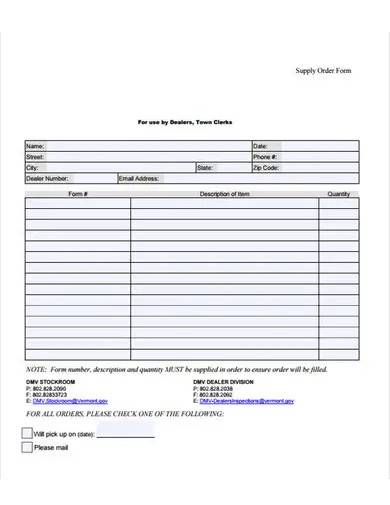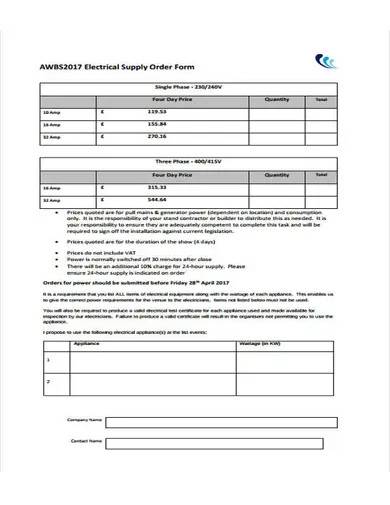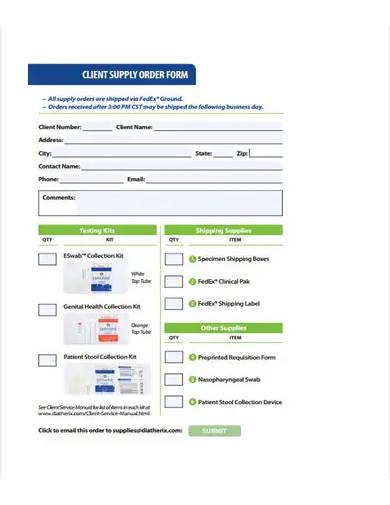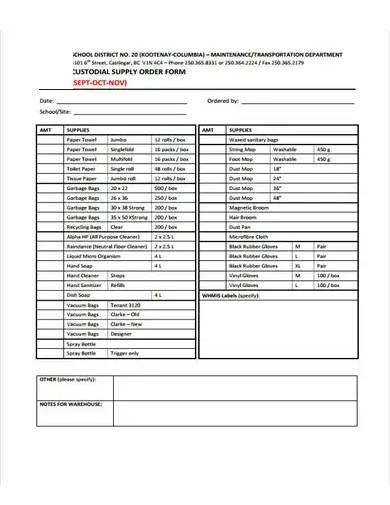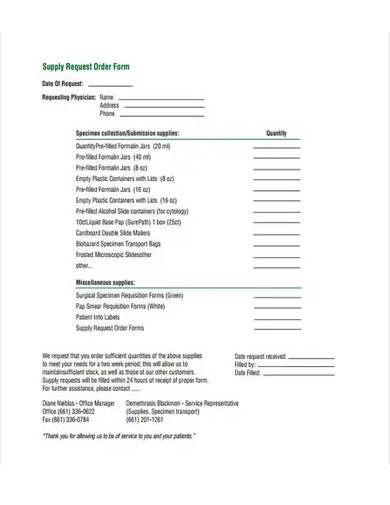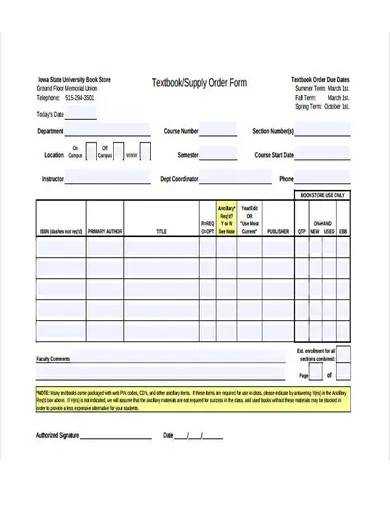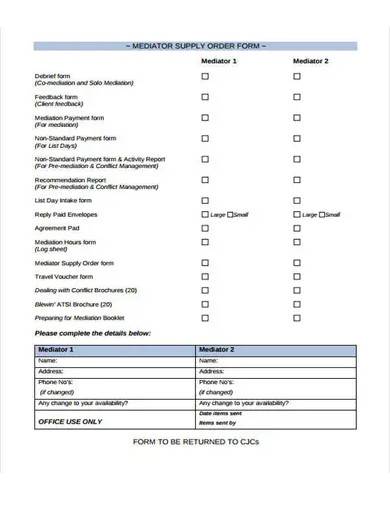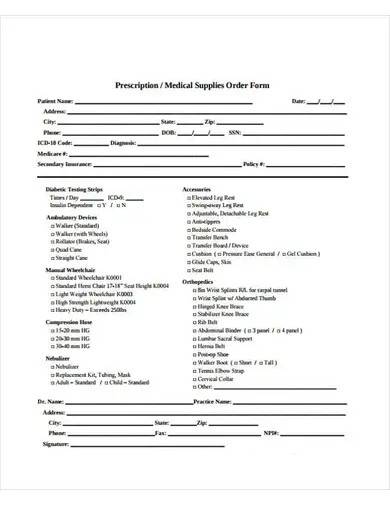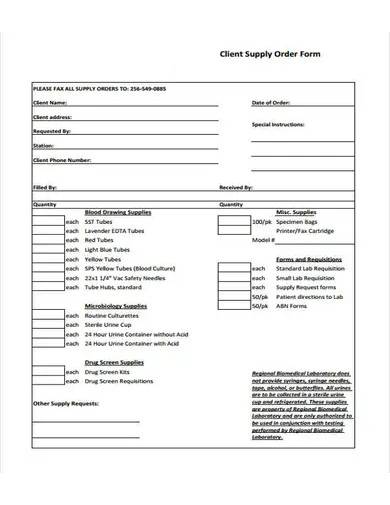Whether it’s for entrepreneurial activities, private uses, or home necessities, supplies are among the trade industry’s significant role players. It’s present in manufacturing, production, and buy and sell. It’s the component of every product and equipment. It is why businesses strive to get the best resources and team up with efficient vendors to provide only their clients’ best. They also make sure to have a smooth-sailing supply order transaction, the necessary agreement with their partners, and the right document tools.
FREE 10+ Supply Order Samples
1. School Supply Order Invoice Template
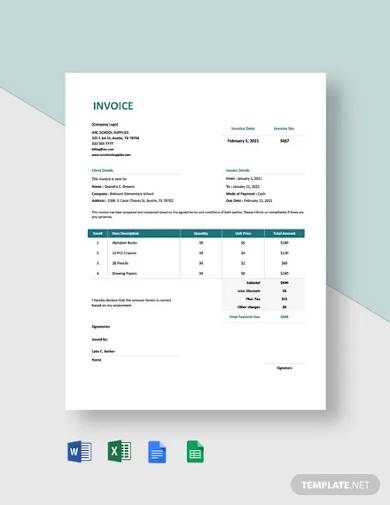
2. Printable Supply Order
3. Sample Electrical Supply Order
4. Client Supply Order Form
5. Sample Custodial Supply Order
6. Supply Request Order Form
7. Sample Textbook Supply Order
8. Sample Mediator Supply Order
9. Formal Office Supply Order
10. Medical Supply Order Format
11. Sample Client Supply Order Form
What Is a Supply Order?
A supply order provides a complete list of requests for delivery or production of products and equipment. It can be essential supplies for business operations, reproduction, assembly of parts, or personal use, whichever purpose the supplies may serve. It’s important to have clear order documentation to aid in billing transparency and reliable proof that the client or customer put in an order form for the items. It makes purchase transactions manageable.
Things to Remember When Ordering Business Supplies
Resources are fundamental to every business. Without resources, there’s no way an enterprise can stand or even make an inkling of something to engage in a trade. Most of these resources come as a supply. According to Chron, the average monthly cost of office supplies can amount to $77 to $92 per employee. On the other hand, a retail startup’s allocation for their inventory depends on different factors such as they type, number, and the suggested retails price of the stocks.
If you want to order supplies better, here are some things to remember:
1. Establish a procedure. While it may not seem like a significant deal when handling your orders and supply inventory, it pays to have a defined procedure. It applies to businesses that constantly needed to replenish their supplies. Ensuring that everyone knows how, where, and when to order and to change the goods in your storage makes it easy to implement.
2. Use an alternative that can help you order less. More than having the right supplies, it’s important to be conservative about your resources. Why have an extensive order when you have a much viable alternative? It is why most offices are going paperless to save on paper and ink supplies.
3. Make a detailed master order list. It’s hard having to remember everything your inventory checklist lacks. It can be challenging to keep track of your supplies, especially when they come in bulk and different variety. A detailed master order list will not only provide you with a raw list of items. It also provides descriptions such as the brand, color variations, quantity, suppliers, and other details that might prove to be useful when you need to make a run for another batch supply.
4. Mind the order schedule. An order schedule will serve as your guide when you need to contact your supplier and change your supplies again. If you’ve made a deal with your vendor, this tells you when you’re supposed to receive your order. If you’re handling perishables, including their expiration dates, this will remind you when to take them out and replace them.
5. Connect with a few vendors. It’s always important to partner with local vendors and suppliers to make long-term connections with them through vendor agreements. You’ll be rewarded with discounts and exclusive deals from them. In return, you’re helping them with their revenues.
How to Make a Supply Order Form
Below are some steps on how to make a supply order form:
1. Provide Accurate Company Details
It goes both ways for the supplier and the purchasing entity. Your supply order form must provide the supplier’s legal name, contact number, and address. It makes them reachable, especially for new clients who have just started taking supply orders from them. On the other hand, the purchasing company’s details, such as their business name, delivery address, and contact information, help the supplier deliver the supply to them in the right place and at the right time. When there are important notifications, it’s easy to let the company know.
2. Be Detailed with the Order Details
Your supply order’s main highlight should be the detailed outline of order items and their description. Be sure to put the quantity and the unit prices. You can also include shipping information and temperature requirements in brief. It helps the receiver know if they received the right items with all the specifications they placed on the request form. Because this accounts for transparency, know that it’s important that what you placed on this document are the same items you send to them.
3. Have a Space for the Billing Section
This part of your form will indicate the prices of the requested items. It should indicate if the orders were in bulk or priced individually. If you’re adding for the shipping fee and tax requirement, label them accurately. If you’re offering discounts, it’s also best to mention them. All this information will help the receiver understand how the total came to be. Include several payment methods and options.
4. Underscore the Requested Delivery Date
Most businesses requesting for supply are treading a deadline. Customers are more likely to trust a supplier who honors their schedule and sends their supply on time. However, some circumstances can prevent this from happening. Including the exact delivery date but warn them of possible obstacles. Notify them right away if something happens that will delay their supply from the original schedule.
FAQs
How do you differentiate purchasing from procurement?
Purchasing refers to buying or getting the goods or services, while procurement refers to the process of searching, planning, and negotiating before availing anything.
How does a purchase order differ from a sales order?
A purchase order is a document sent by the buyer to a supplier detailing their request of goods, while a sales order is a supplier’s response to a buyer confirming that they’ve received the request and is preparing to deliver it.
Which role is responsible for ordering supplies?
The order clerk is the one responsible for making orders, checking the order quantities and description.
An order supply form makes it easy for the supplier and the buyer to transact. It provides transparency and helps a supplier’s client to confirm their order with all the specifications they requested. Our supply order templates will help develop your business deals. Download now!
Related Posts
FREE What Is a Requisition? [ Types, Difference, Steps Involved ]
FREE 30+ Company Profile Samples & Templates in PDF
FREE 40+ Sample Requisition Forms in PDF
FREE 9+ Sample Blanket Purchase Agreement Templates in MS ...
FREE 11+ Sample Parts Order Forms in MS Word PDF
FREE 6+ Sample Sales Order in Excel PDF
FREE 11+ Sample Student Request Forms in MS Word PDF
FREE 9+ Sample Access Request Forms in MS Word PDF
FREE 50+ Sample Request Forms in PDF MS Word
FREE 8+ Sample Purchase Order Request Forms in MS Word PDF
FREE 9+ Sample Job Request Forms in MS Word PDF
FREE 9+ Sample Supply List Templates in PDF MS Word
FREE 10+ Distributor Order Form Samples in PDF MS Word
FREE 8+ Sample Vendor Registration Forms in MS Word PDF
FREE 10+ School Order Form Samples in MS Word PDF

